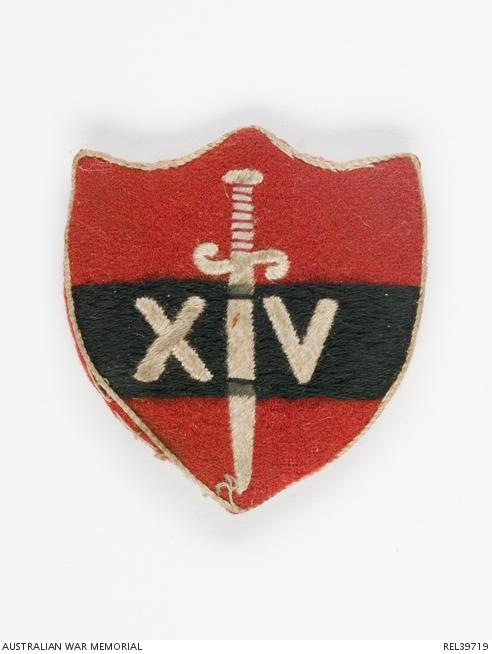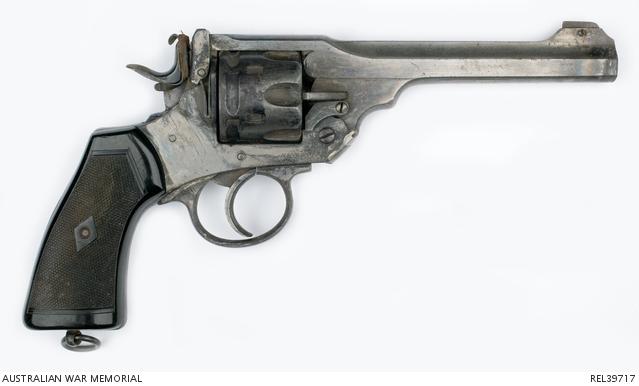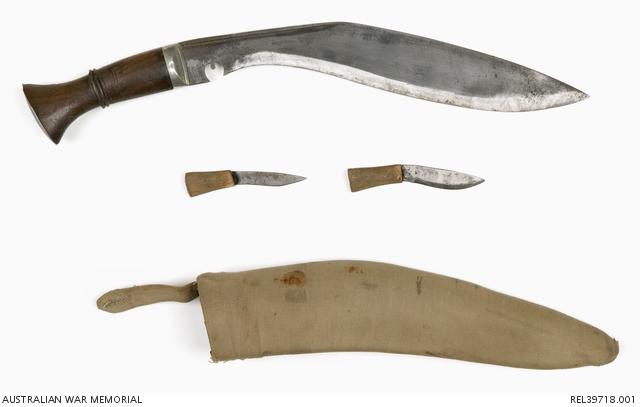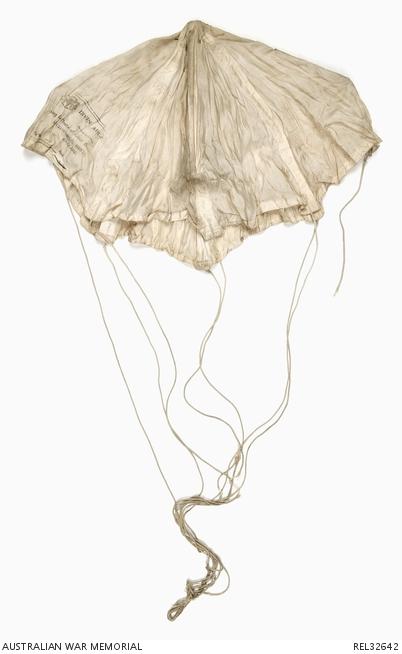Not forgotten: items from the 14th Army in Burma
In the latest issue of Wartime, historian James Holland explores the command of General William Slim, who turned around the fortunes of the British 14th Army as they fought against the Japanese in Burma during the Second World War.
The story of “the Forgotten Army” is told through items in the Memorial’s collection, including objects that once belonged to Major Lesley Welbourne Bowley, and photographs and other items related to the Payne twins, who flew Spitfires in Burma in support of the army.

The Fourteenth Army shoulder patch of Major Leslie Bowley. AWM REL39719
Major Leslie W. Bowley
Leslie Bowley was the son of a British officer who was killed in Belgium in October 1914, a few months after the First World War began. During the 1930s he served in the British Territorial Army, first with the Imperial Cadet Yeomanry and then with the 54th (City of London) Heavy Anti-Aircraft Regiment, before being granted a commission.
Within weeks of Britain’s declaration of war against Germany, Bowley embarked for France with the Royal Artillery but was diverted to India, arriving in December 1939.
By May 1941, Bowley had been promoted to captain. His battery was sent to Iraq to assist in quelling a nationalist and pro-Nazi coup d'état led by Rashid Ali. The conflict lasted less than a month, with Ali's forces defeated and the British-backed government restored.

A Webley MK VI Service Revolver from the collection of Major Leslie Bowley. AWM REL39717
Bowley and his unit were next sent to Burma, where they were engaged from the fall of Rangoon in March 1942. Bowley was wounded during the battle of Yenangyaung in April 1942, and during the British Army’s humiliating retreat to India the battery’s guns and equipment were destroyed.
Bowley rejoined his regiment at Arakan (the region that today forms the Rakhine State in Myanmar) in June 1942 and, having been promoted to major, was placed in command of a light anti-aircraft battery. While in Arakan, Bowley was shot by a Japanese sniper. Although wounded – the round passing through his ribs but missing all of his vital organs – he found and killed the sniper.

A siropate kukri knife, with accoutrements, designed for war fighting. AWM REL39718.001
After his recovery Bowley was posted to act as the air liaison officer with the Royal Air Force and US forces in Burma. He also flew into China on missions to supply arms and food to Chinese forces. However, after becoming wracked with illness he was sent back to England in July 1944 and posted to an artillery training school in Wales. His wife and son were also in Wales following their evacuation from London during the Blitz. Upon reuniting, Bowley’s wife barely recognised her emaciated husband, and their son was initially terrified.
Bowley saw out the remainder of the war with the artillery training school, and then returned to the foreign office of Messrs Coutts and Company; his first employer had kept his job open for him during his years of service.
Leslie Bowley died in 1967.
The Payne twins
Twin brothers Warrant Officer John Payne and Warrant Officer Alf Payne flew Spitfires with 615 Squadron, Royal Air Force, in Burma. In June 1944, John Payne’s aircraft was shot down by a Japanese Zero near Imphal in north-east India. He managed to bale out at a low altitude, and was saved only by his parachute snagging in a tree.

The white silk parachute used by Warrant Officer John Payne when his Spitfire was shot down by a Japanese fighter on 17 June 1944. AWM REL32642
Though wounded, Payne travelled for 40 kilometres through rugged jungle and Japanese lines to reach safety. After four days of being assaulted by mosquitoes, ticks and leeches, and wary of prowling tigers and snakes in the jungle, he reached Burmese villagers who treated his wounds and carried him to British lines.